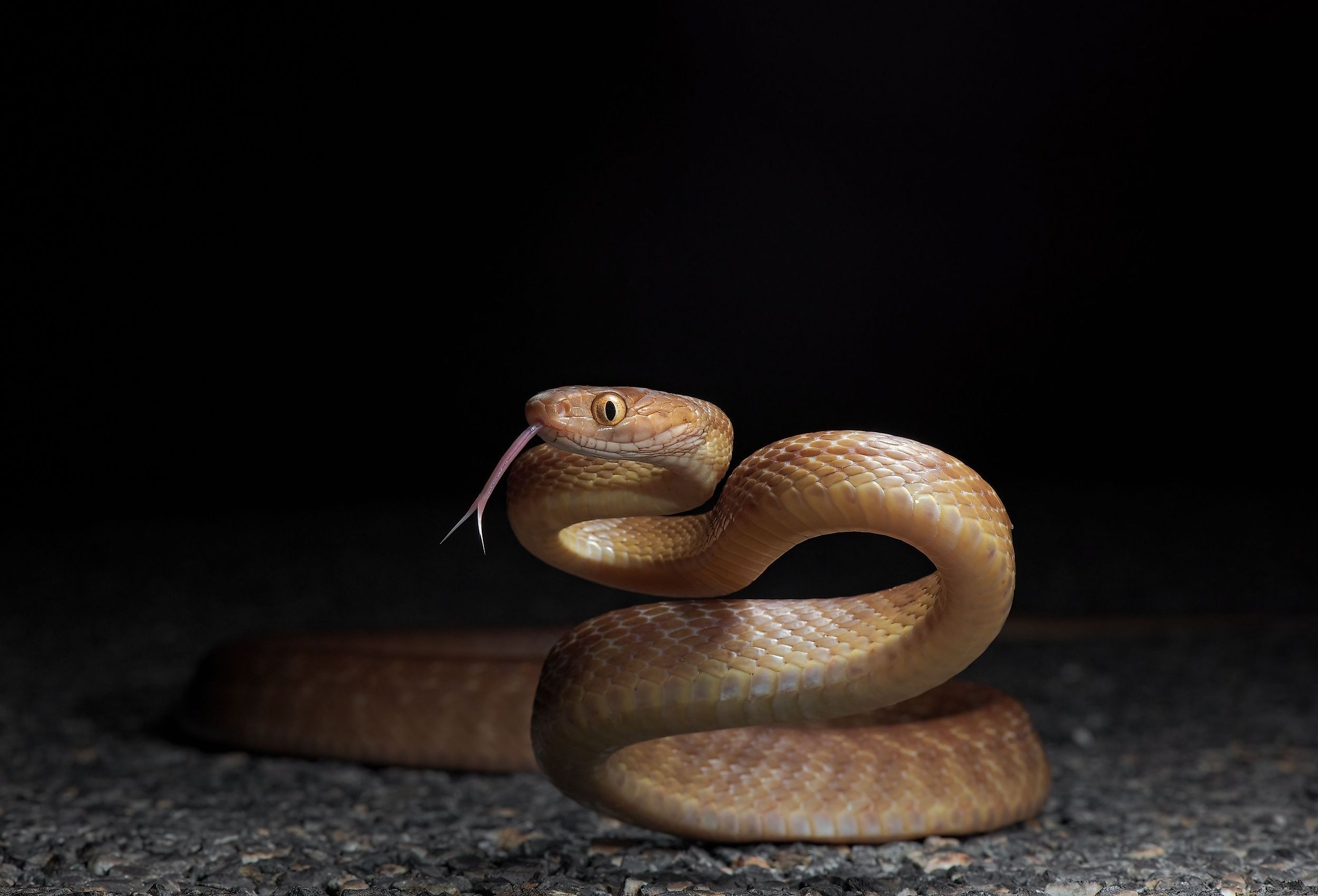
The Venomous Snakes Of Queensland
Queensland, Australia, is an extraordinary place. It boasts everything from vibrant coastal towns to the lush rainforests of the Daintree and the rugged Outback. The state is also home to the most infamous venomous snakes in the world. These creatures, while often elusive and rarely encountered, add a certain element of adventure and danger to the state’s outdoor offerings. Whether exploring the Great Barrier Reef’s shores in Cairns or trekking through the hinterlands near the Gold Coast, it is essential to be aware of these snakes and to approach Queensland’s natural beauty with respect and caution.
Inland Taipan
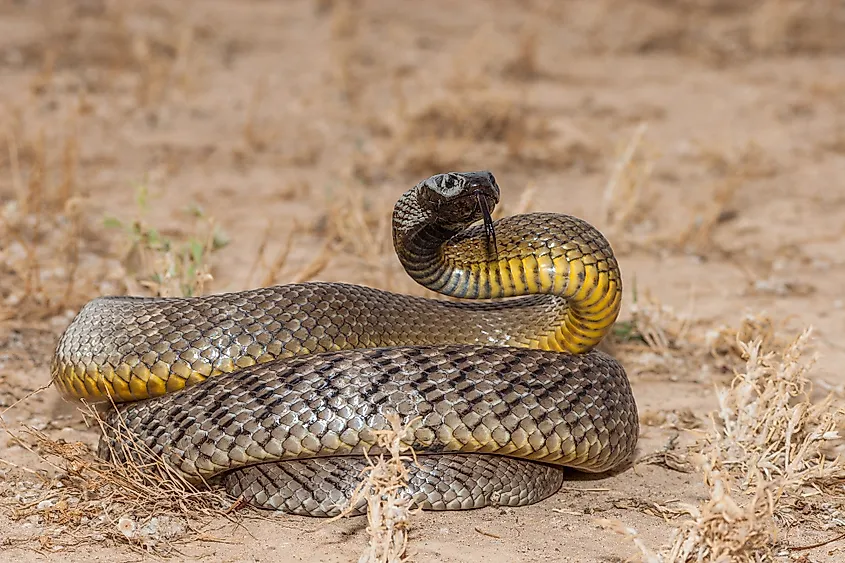
The Inland Taipan (Oxyuranus microlepidotus), also known as the "fierce snake," holds the title of the most venomous snake in the world. A relatively small snake, this thin, olive-brown slitherer, often has a distinctive cream-colored belly. Native to the remote areas of Queensland’s outback, the inland taipan has venom that is around 50 times more toxic than that of a cobra, able to cause death within hours if untreated. This snake’s elusive nature means that human encounters are rare, and it prefers the arid environment of Queensland’s deserts, which are far from populated areas. Those adventurous enough to journey through Queensland’s harsh interior may catch a glimpse of this formidable creature. However, fear not—encounters are rare, and the inland taipan's behavior is usually non-aggressive if left undisturbed.
Coastal Taipan
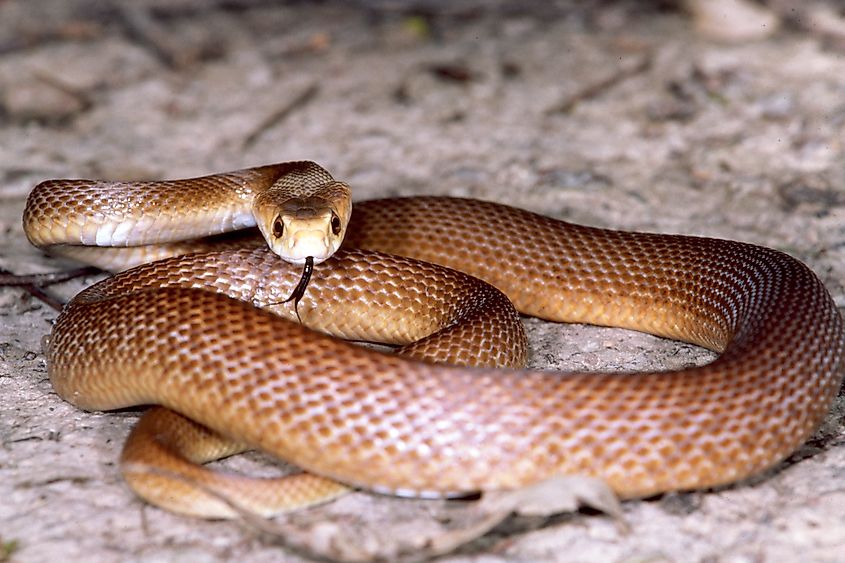
The Coastal Taipan (Oxyuranus scutellatus), which is found primarily in the coastal regions of Queensland, is another highly venomous snake. Its venom, while slightly less potent than that of its inland cousin, is still deadly. The coastal taipan can be found in a variety of habitats, including the open woodlands and coastal scrublands and is often encountered in areas with abundant wildlife, such as rainforests and grasslands, where it preys on small mammals and reptiles. They can be up to three meters long, with a narrow body, typically brown in color, and with lighter markings along its back.
Though the coastal taipan's venom is incredibly potent, it is generally a shy and reclusive creature. It prefers to avoid human interaction and, like many venomous snakes, will only strike if it feels threatened. As visitors explore Queensland’s coastline and coastal rainforests, they should always take caution when venturing off the beaten path.
The Eastern Brown Snake
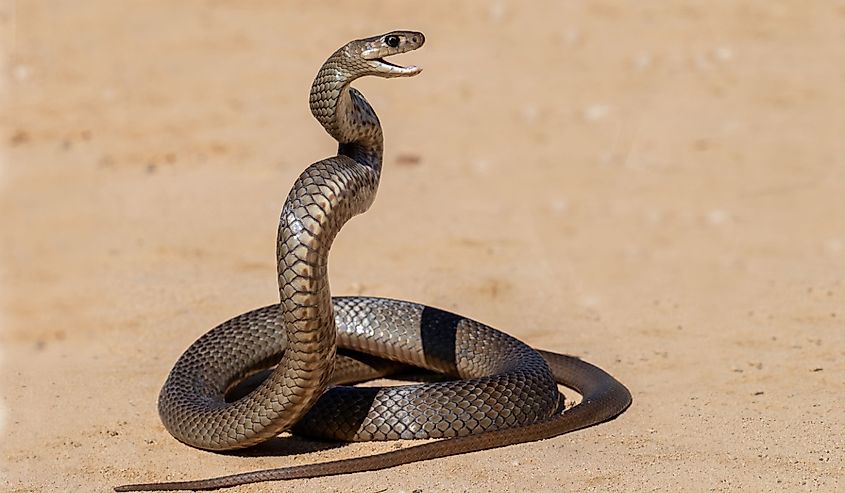
The Eastern brown snake (Pseudonaja textilis) is found throughout Queensland and is perhaps the most dangerous snake in all of Australia. Known for its aggressive behavior and potent venom, the Eastern brown is responsible for more snakebite deaths in Australia than any other species. Recognizable for its slender body, usually between 1.5 and 2 meters, with a dark head, brown body, and pale belly. It can be encountered in a range of habitats, from urban areas in Brisbane to the rural farmlands of the Darling Downs.
The Eastern brown snake is agile, fast, and highly defensive, which makes it a potentially dangerous species if provoked. The cities of Brisbane and Ipswich, with proximity to natural reserves and farmland, are common haunts for these snakes. While the Eastern brown snake does not typically seek out human contact, hikers and outdoor enthusiasts should remain vigilant when traversing the state’s bushland and rural areas.
Common Death Adder
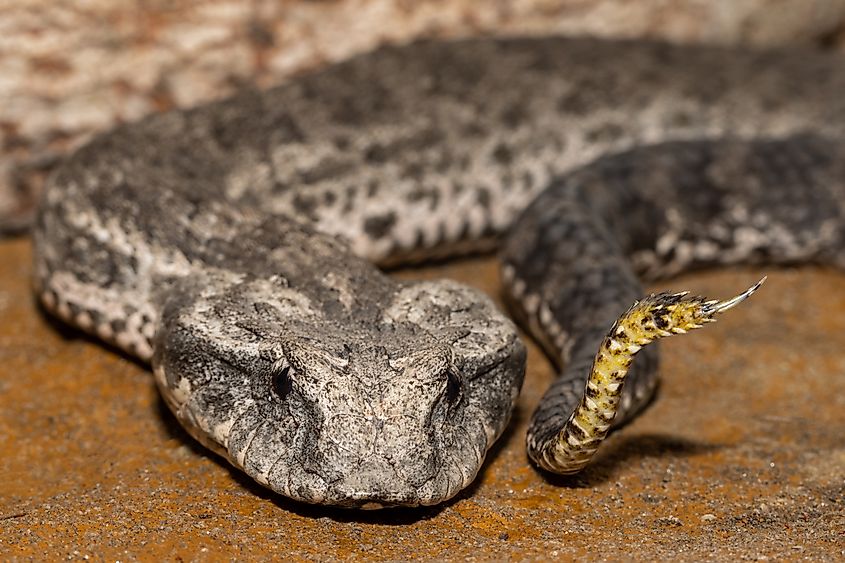
The common death adder (Acanthophis antarcticus) is a highly venomous snake found in forests, woodlands, and open grasslands across Queensland. They have triangular heads, short, stout bodies, and various colorations, including reddish-brown, gray, and yellowish hues. The death adder is a slow-moving predator that relies on its excellent camouflage to ambush prey. It is not aggressive by nature, but its venom is capable of causing rapid paralysis, which can be fatal if not treated quickly.
The Common Death Adder is most frequently found in the rainforests and bushland areas, these regions are known for their natural beauty, and are perfect habitats for this stealthy predator. Death Adders are often found hidden under leaf litter or in the undergrowth, so visitors should always be careful when walking through dense vegetation.
Tiger Snake
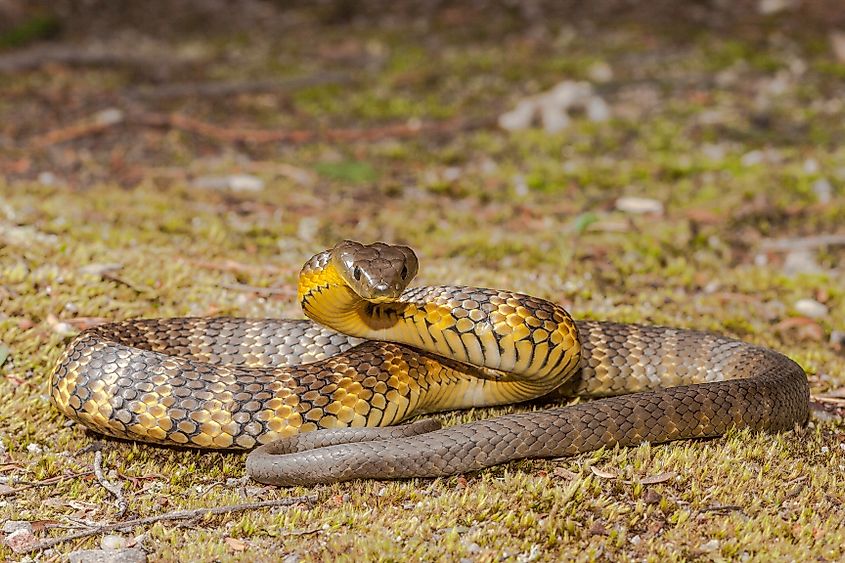
The tiger snake (Notechis scutatus) is a well-known species in Queensland, easily recognizable by its bold, banded pattern. It is found in a range of environments, from coastal areas, particularly around the Great Barrier Reef and its surrounding islands, to wetland areas near towns like Cairns and Mackay. The tiger snake's venom is potent, and bites can result in death if not treated with antivenom. However, despite its fearsome appearance, the tiger snake is typically shy and avoids human contact when possible. Those who enjoy exploring the state’s beaches or wetlands should always watch their step and give these beautiful snakes space.
Blue-Bellied Black Snake
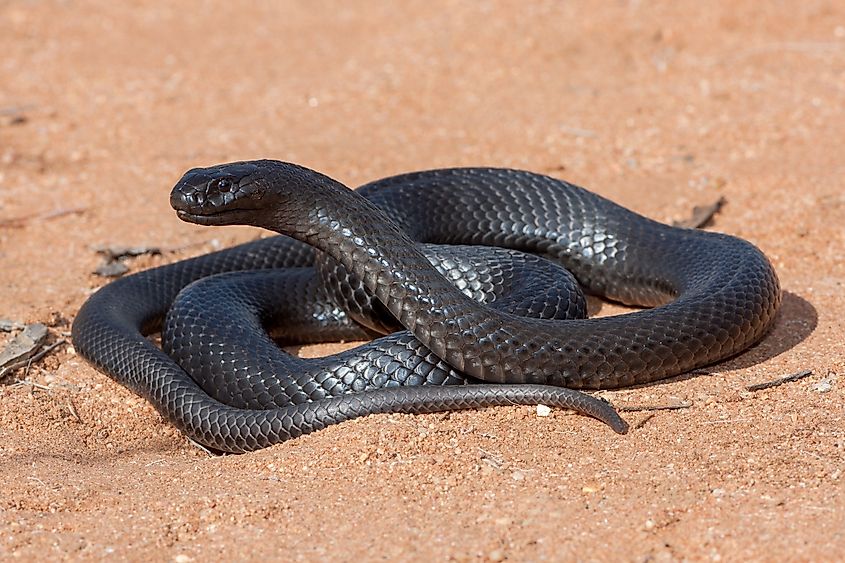
The Blue Bellied Black Snake (Pseudechis Guttatis) is another venomous species commonly found throughout Queensland in a variety of habitats, including forests, farmlands, and urban areas. Recognizable by their nearly all-black, occasionally spotted, bodied, their bellies are not as blue as one might expect and they are slender snakes of about 2 meters in length. These snakes are known for their speed and aggressive tendencies, particularly when threatened. The blue-bellied black snake’s venom is potent, and while fatalities are rare, bites can lead to significant harm if not treated quickly.
Visitors to towns like Gympie and Maryborough, where rural and forested areas converge, should be aware of black snakes. These snakes are often found in areas where food sources are abundant, such as near waterholes or in regions with dense vegetation. As with many venomous snakes, the best course of action is to remain calm, give the snake space, and back away slowly.
Brown Tree Snake
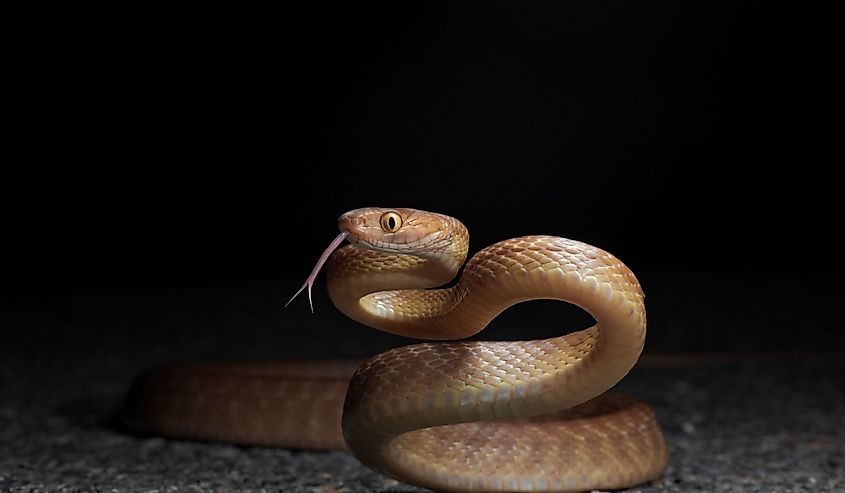
The brown tree snake (Boiga irregularis), sometimes called the “Night Tiger” is another venomous snake found particularly in the tropics or Northern Queensland. It is around average build for an Australian snake measuring about 2 meters in length and remaining relatively slender, this brown snake often has striped patterned markings on its back, and a large head with vertical pupils. While it is not as venomous as some of the other snakes on this list, its bite can still be painful and potentially very dangerous.
The brown tree snake is arboreal, meaning it spends most of its time in trees, and is commonly found in forests and rainforest areas. This snake is known for its quiet, unobtrusive nature. It does not actively seek out humans, but it can be encountered when walking through dense tropical forests. Hikers in the Daintree or along the Bloomfield Track should always be cautious of their surroundings and stay alert to any movement in the trees above.
Red-Bellied Black Snake
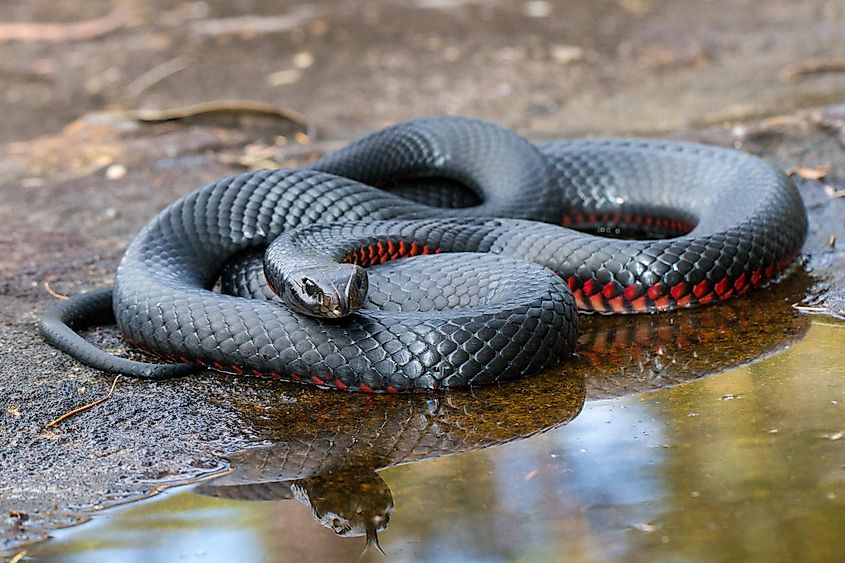
The red-bellied black snake (Pseudechis porphyriacus) is easily identifiable by its glossy black back and bright red belly. Though its venom is somewhat less potent than some other species, it can be deadly if not treated in time. The red-bellied black snake is typically found in woodland areas, along the edges of wetlands, and near rivers, making it common in places like the Sunshine Coast and the hinterlands of the Gold Coast. Though typically not aggressive, it will defend itself if threatened. When exploring Queensland’s wetland regions or walking through the forests near towns like Noosa, it is important to stay on the trail and avoid disturbing the snake if encountered.
Mulga Snake
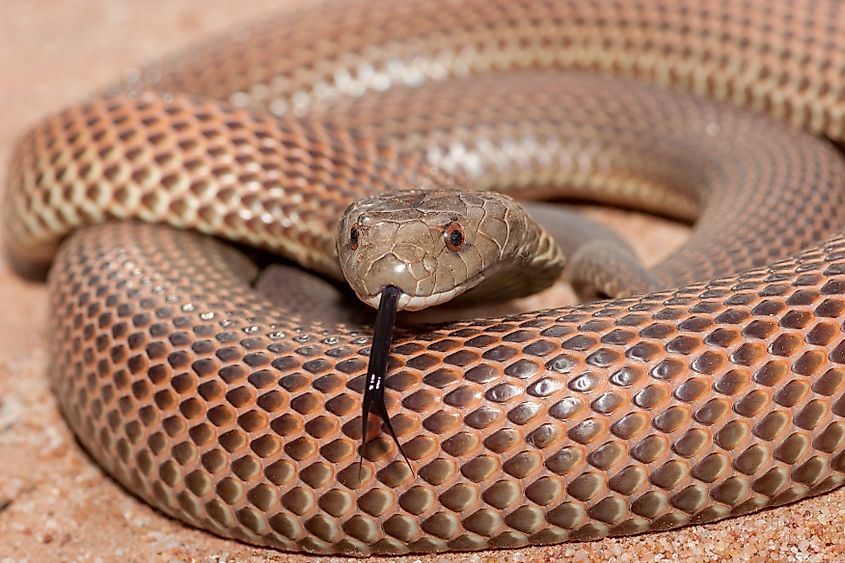
The Mulga Snake (Pseudechis australis) is a large, aggressive snake species found across Queensland. With its potent venom, the mulga snake poses a significant threat if provoked. Often stretching to well over 3 meters (10 feet) and carrying a wide set frame, this Snake is every bit as intimidating as any other on this list. Its scale patterns create an unmistakable visual effect as they each shift from light to dark, creating an almost net-like appearance. The Mulga inhabits a wide range of environments, from open woodlands and savannas to coastal areas. Though, as with most snakes on this list, the Mulga Snake prefers to avoid confrontation.
Visitors to Queensland’s outback, particularly near towns like Charleville and Longreach, should keep themselves on particularly high alert for this snake in the wild, the mulga snake can be surprisingly speedy. Always treat with caution.
Western Brown Snake
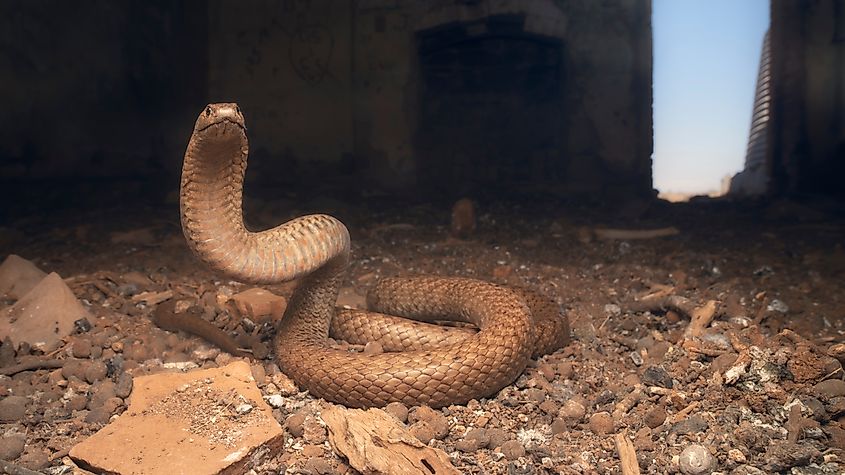
The Western Brown Snake (Pseudonaja nuchalis) particularly inhabits the northern and western portions of Queensland. Unlike the more well-known Eastern brown snake, the Western Brown is generally smaller and less aggressive, but its venom is still highly toxic. Living and hunting primarily in grassy fields, woodlands, and agricultural areas, the Western Brown Snake is often encountered in rural Queensland. Towns like Rockhampton and Mackay, surrounded by fertile farmland, offer prime habitat for this elusive creature. Its quiet and elusive nature means it is often only noticed when it is too late.
Although it is not typically aggressive, the Western Brown Snake is more prone to strike if it feels threatened, and its venom can be potentially fatal if untreated. As with many other venomous snakes in Queensland, encounters are rare if proper precautions are taken, such as protective outerwear and being mindful of surroundings while walking through long grass or bushland.
Queensland’s diverse landscapes, from the tropical rainforests of the Daintree to the sun-soaked beaches of the Gold Coast, offer countless opportunities for adventure. Yet, within this natural wonderland, the state’s venomous snakes stand as a reminder of the untamed wilderness that thrives here. Whether you are hiking through the rugged Outback, exploring lush rainforest trails near Cairns, or strolling along the beach in Townsville, it is essential to be aware of the snakes that call this place home.
While encounters are rare and most snakes prefer to avoid humans, It is important to remember that we are the guests in their territory. We are also a relatively imposing creature and we are surely going to induce as much anxiety in snakes as they do in us.











